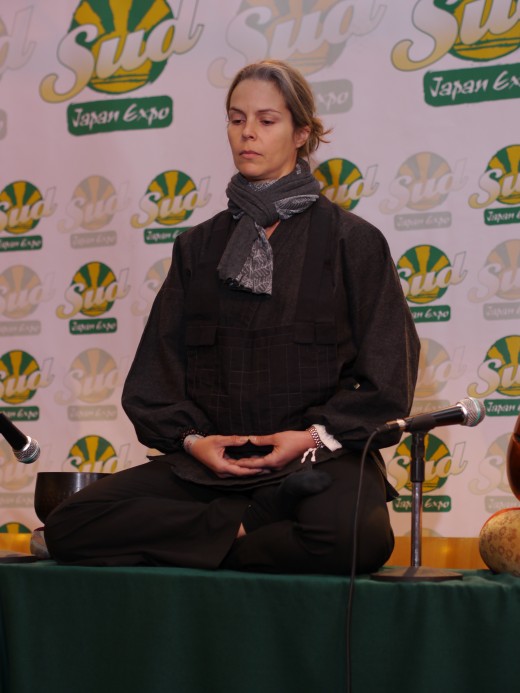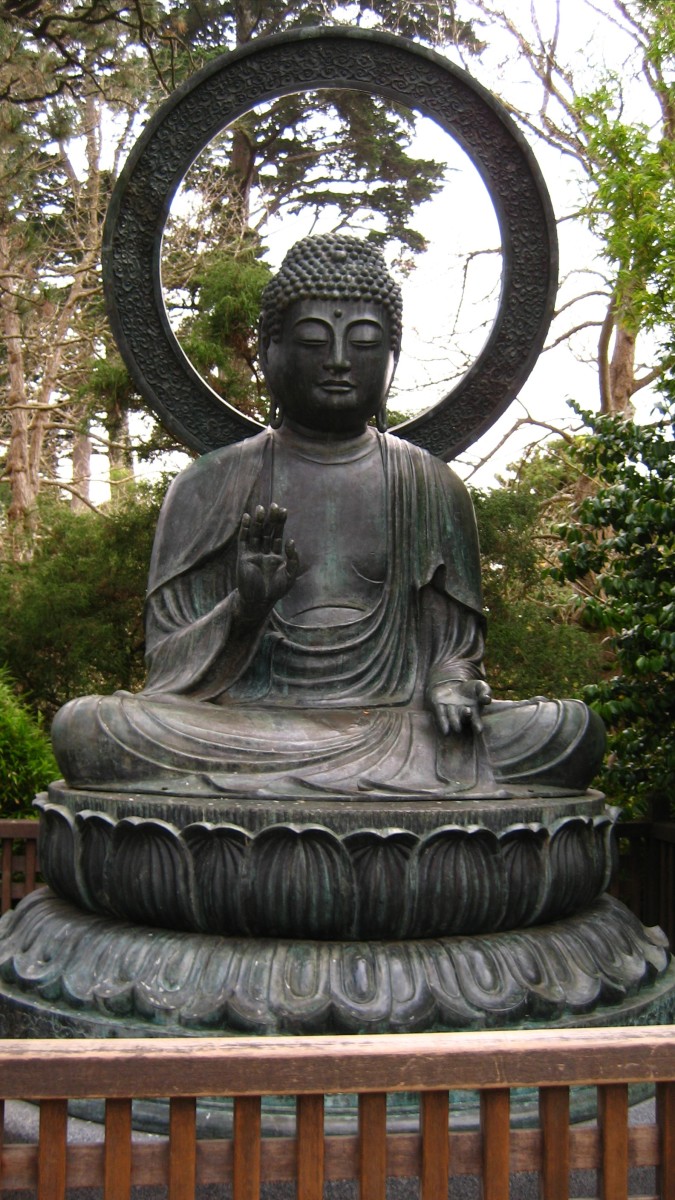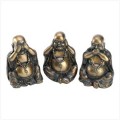How to Get Started Doing Zazen Style Zen Meditation

The limitless sky of meditation.
The clear moonlight of wisdom.
The truth revealed as eternal stillness.
This earth is the pure lotus-land.
This body is the body of the Buddha.
-- Hakuin Zenji (1689-1769)
Zazen literally meaning 'sitting meditation' is the practice of Zen Meditation. However it is not a meditation program with a process of stages of development or accomplishment. As Taigen Dan Leighton says:
Rather, zazen is the physical realm for enacting and expressing the fundamental insight and kindness of buddha nature, the omnipresent capacity for awakened awareness. Zazen is the posture and attitude in which we actually meet the totality of our true life.
There are three ways of practicing zazen style of meditation:
- Concentration: focussing on the breath by counting the breaths
- Koan Introspection: focusing the consciousness on a zen story or poem
- Shikantaza: just sitting or objectless meditation that focuses on clear, non-judgemental, panoramic attention to all of the myriad arising phenomena in the present experience
What is Zen?
The word 'Zen' is the Japanese pronunciation of the Chinese word 'dzyen' ('chan' in Mandarin) which in turn was derived from the Sanskrit word 'dhyana' meaning 'meditation'.
Mahayana Buddhism emerged in India in the early first century BCE and spread to China and took the form of 'Chan' Buddhism in the sixth century CE and later spread south to Vietnam, Korea and Japan and was called Zen Buddhism.
There are three traditional sects of Zen Buddhism known as the Soto, Rinzai and Obaku. The Soto School is the largest and emphasizes practicing zazen through the 'shikantaza' or 'just sitting' method of meditation.
Zen is a practice of questioning, an attitude of sustained inquiry. It is not about finding the answers but also letting go of the insights that one gets while practicing meditation. Zen Buddhist values can be applied in three levels of our lives:
- by bringing awareness to the complexity and suffering of this body and mind when practicing zazen or sitting meditation.
- Returning from formal zazen practice to everyday activities, to express our meditative awareness and caring with friends, family and coworkers and all the beings we personally encounter.
- Explore how to express buddha heart to respond to the challenges and troubles of our society and culture.

The Purpose for Practicing Zazen or Zen Meditation
Each of us have some question that has brought us to this point where we want to engage in a practice of zazen meditation. It is something we want to explore.
The purpose of this questioning is not to find an answer. In zazen we first sit upright, centered, with ease and restfulness. There is something we are looking into. How can we practice with the question? There cannot be any one way of doing it because we each of us have our own way of dealing with it. But the most important step is to recognize we have a question. How do we live this life? How do we take care of this world, face our challenges and also the issues we have to face together?
In the Japanese Soto Zen tradition, zazen is just a gentle upright sitting, not an athletic competitive event to determine who is the most enlightened. As Taigen Dan Leighton writes:
Zazen is a question, an inquiry. Even when sitting quietly, gently, at the core of our sitting is the activity of questioning.
This style of meditation is not passive and one must make sure not become dull and listless. Settling in to the dynamic quality of zazen as question and inquiry requires willingness to be present for this question because a good question provides more questions. Answers do come sometimes, but they bring more questions as well.
Zazen is not a means to an end. It is not about becoming a Buddha by practicing it for a long period of time. As the thirteenth-century founder of the Japanese Soto Zen tradition Eihei Dogen says, 'Have no designs on becoming Buddha'.
Zazen Meditation for Beginners
How to Practice Zazen or Sitting Meditation
Zazen mind and its transformative function depend on posture and breathing. For zazen we emphasize upright posture, as this posture becomes a way in which we learn and attitude that goes beyond the formal meditation hall practice... To find uprightness that is relaxed and not tense is subtle; it takes a while to find our seat in this practice. – Taigen Dan Leighton
Steps to starting zazen style Zen meditation:
- Assign a quiet room or space for meditation.
- You can face a blank wall.
- This meditation is different in that the eyes are kept open or half open.
- Find a comfortable posture on the cushion:
- full lotus
- half-lotus
- sukhasana or easy cross-legged posture
- kneel with the help of a bench or vertical cushion.
- The back must be upright with the shoulders above the pelvis, ears above the shoulders.
- The neck should be relaxed in 45 degrees angle of the chin to the chest.
- Look at a spot a few feet from you.
- Keep your eyes gently open.
- Place the left palm over the right palm and let the tips of thumbs touch in the form of a circle
- Place your hands in front of you near your navel.
- Focus on the breath:
- Count your breaths: 1- inhale/1- exhale is one count.
- Count 1-10 breaths which is one set.
- Begin again at 1, if your mind wanders before you get to number 10, then start again at 1.
- Breathe into a spot two inches below the navel.
- End the zazen session gently, slowly. Try to stay in a calm state as long as possible.
The Practice of Zazen in Daily Life
Begin with 10 minutes of practice daily slowly increasing the time. A timer is a helpful tool so that you don't have to worry about the passage of time.
Breathing is always happening, but attention to this inhalation, then this exhalation, is a way of knitting together the whole of our zazen awareness. – Taigen Dan Leighton
We can practice zazen wherever we are, whatever we are doing. Breathe in and out and pay attention to your breath whatever activities you are engaged in. During zazen practice if you feel any discomfort in any part of your body, breathe into it and be aware of it. Bringing awareness to the details of your posture, there is an opening or capacity, of letting go of the idea that we should always be comfortable. A willingness to tolerate some further level of discomfort will be seen.
Awareness is transformative and this transformative quality also supports our awareness. Zazen is a mode of creative expression. How we conduct ourselves during meditation is our way of expressing buddha mudra, a buddha's posture, on our cushion. This practice helps find the creative energy in our whole life.
Sources:
- Leighton, Taigen Daniel. Zen Questions: Zazen, Dogen, and the Spirit of Creative Inquiry. Wisdom Publications, Somerville, MA, USA, 2011.
- Hodge, Stephen. Zen Master Class: A Course in Zen Wisdom from Traditional Masters: For Meditators at Every Level. Quest Books, Wheaton, IL, USA, 2002
Commit to Sit
Do you think you can make a committment to practice zazen daily?
How To Meditate for Beginners
- How to Practice Focused Meditation
Two simple exercises to do focused meditation. Success in meditation depends on how well a person can concentrate with a single focus on a particular subject or ideal. Meditation begins where concentration ends. - How to Comfortably Sit Cross Legged in Yoga
Many of us take sitting cross legged on the floor for granted. However, are we in perfect balance and alignment when we sit on the floor. Find out how to sit correctly and for long periods to practice yoga, pranayama or meditation. - Easy Zen Meditation Tips
Meditation can be practiced by anyone and it is easy to begin a daily practice. Learn about the obstacles and how you can make it easy for yourself to practice a simple form of meditation. - Easy and Simple Meditation for Beginners
Regularity rather than duration is the key to success in meditation. Even the simplest form of meditation will help in becoming centred, peaceful and alert through out the day. Read on for some important do's and don'ts when practicing meditation.
About the Author
Sushma Webber writes content for both web and print media. She has worked as a volunteer in many not-for-profit organizations. She is interested in creating a balance in life between the physical, emotional, mental and spiritual aspects. She is interested in mindful awareness practices, Zen practices and translating these in daily life at work in front of the computer and during various activities of her life.
Links for Zazen or Zen Meditation
- Ancient Dragon Zen Gate - Soto Zen Buddhist Meditation in Chicago
Ancient Dragon Zen Gate is a community of practitioners committed to being a home for Soto Zen Buddhist meditation practice in Chicago. Our Guiding Dharma Teacher is Taigen Dan Leighton. He works to develop accessible practice and training programs. - Audio Dharma Talks from Ancient Dragon Zen Gate
You can listen to audio dharma talks on zen and meditation by Taigen Dan Leighton and others to help improve your practice. - Article - What is Zazen?
Zazen means ‘sitting meditation’. It is being oneself, with nothing extra, in harmony with the way things are. It is the simple practice of looking directly at life as it is. - SZBA
The Soto Zen Buddhist Association is organized to preserve and promote the Buddha-dharma through the teaching and practice of Soto Zen Buddhism in North America.








